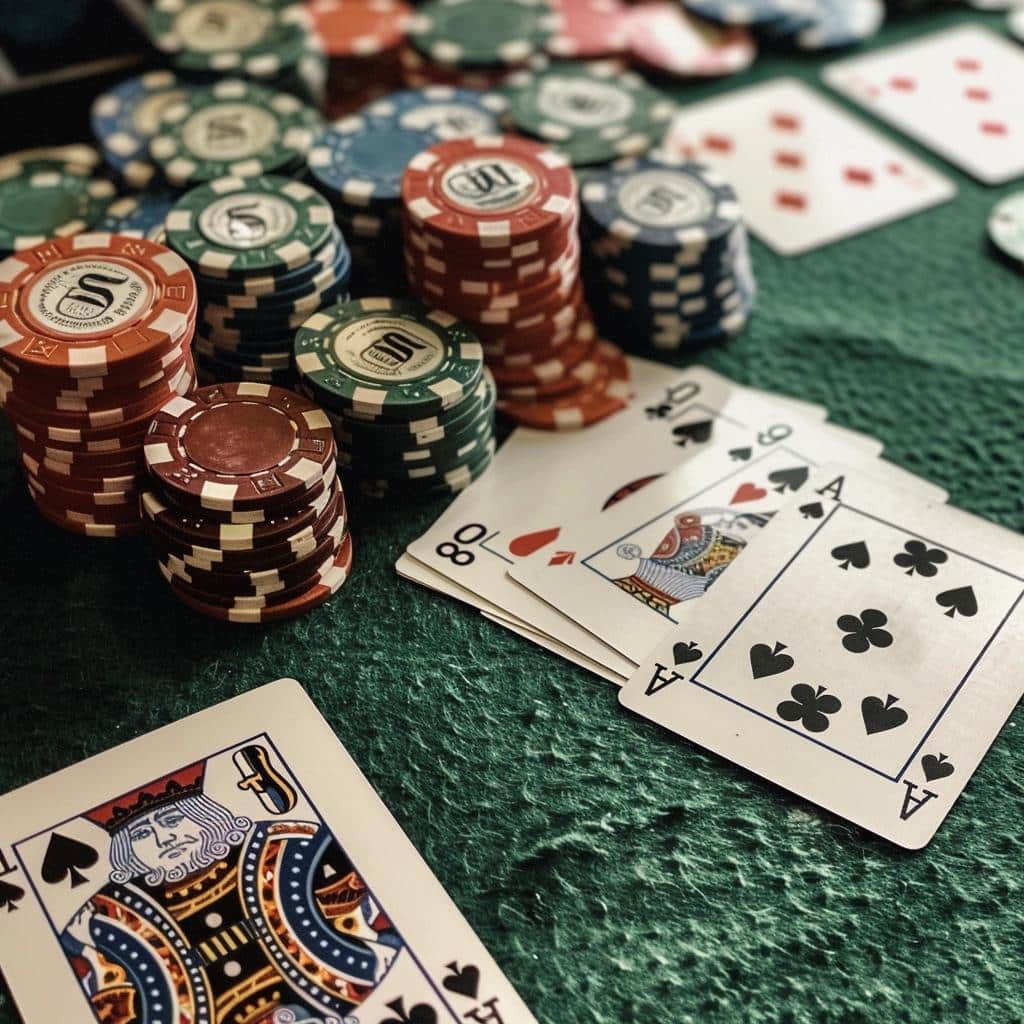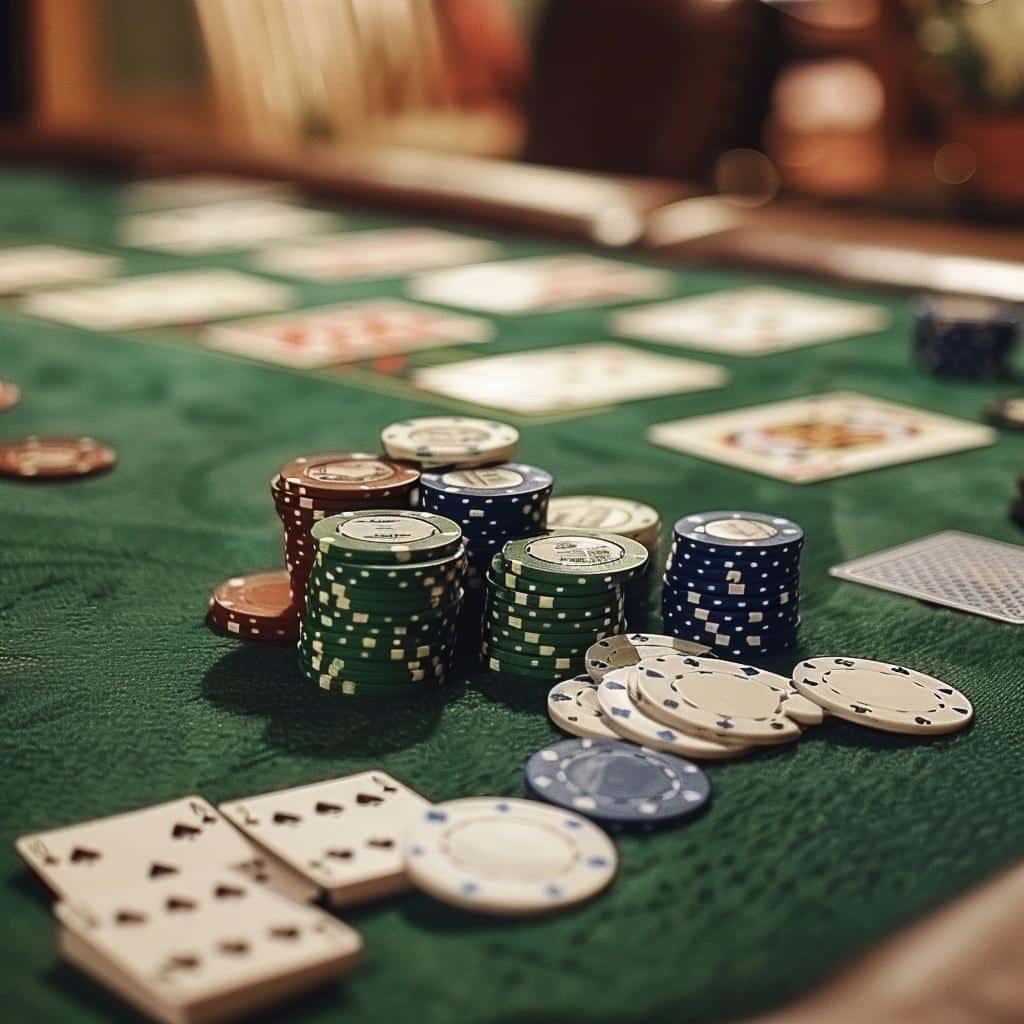Introduction to Poker: The Basics
Ah, poker—the classic game of cards, chips, and calculated risks. Whether you’re a seasoned pro or a fresh-faced newcomer, there’s something undeniably alluring about the thrill of the cards and the art of the bluff. But fear not, my friend, for I’m here to guide you through the basics and set you on the path to becoming a poker pro (or at least not embarrassing yourself at the next game night).
Understanding Poker Hand Rankings

Before we dive into the nitty-gritty, let’s tackle the foundation of poker: hand rankings. Think of it as the hieroglyphics of the poker world—once you crack the code, everything else falls into place. From the almighty royal flush (the crème de la crème) to the humble high card (the underdog of the bunch), memorizing these rankings is crucial.
Here’s a handy little table to get you started:
| Hand Ranking | Description |
|---|---|
| Royal Flush | The king of all hands: A, K, Q, J, 10 of the same suit. |
| Straight Flush | Five consecutive cards of the same suit. |
| Four of a Kind | Four cards of the same rank. |
Trust me, once you’ve got these rankings down pat, you’ll be well on your way to poker greatness (or at least impressing your friends).
Poker Gameplay: The Main Phases
Now that you’ve got the hand rankings under your belt, it’s time to dive into the gameplay itself. Poker is a game of phases, each with its own set of rules and strategies. Let’s break it down:
The Deal: This is where the cards are dealt to the players, either face-up or face-down, depending on the variant you’re playing. It’s the calm before the storm, if you will.
The Betting Rounds: Ah, the heart of the game. This is where the magic happens—the raising, the folding, the bluffing. Each round consists of a series of bets, raises, and (sometimes) some well-timed trash talk.
The Showdown: The moment of truth. Surviving players reveal their hands, and the player with the best hand takes home the coveted pot. It’s like the climax of a suspense movie, but with chips instead of explosions (usually).
Of course, each variant of poker (Texas Hold’em, Omaha, Seven-Card Stud, etc.) has its own unique twists and turns, but understanding these main phases is the first step to becoming a poker pro.
Fundamental Poker Strategies for Beginners

Alright, you’ve got the basics down—hand rankings, gameplay phases, the works. But what separates the pros from the amateurs is strategy. Here are a few fundamental tips to get you started:
Start Tight, Play Tight: As a beginner, it’s wise to play a conservative game. Don’t go all-in with mediocre hands; wait for the good ones and play them aggressively.
Learn to Read Tells: Poker is a game of psychology as much as it is a game of cards. Watch for tells—those little unconscious habits that can give away the strength of someone’s hand.
Manage Your Bankroll: Poker can be a roller coaster ride of wins and losses. Set a strict bankroll and stick to it. Never gamble more than you can afford to lose.
Remember, poker is a journey. The more you play, the more you’ll learn and the better you’ll become. But for now, these fundamental strategies should give you a solid foundation to build upon.
Poker Etiquette and Table Manners

Alright, so you’ve got the basics down, and you’re ready to hit the tables (or the virtual felt, if you’re playing online). But before you dive in, there’s one more crucial aspect to master: poker etiquette.
You see, poker isn’t just a game of cards—it’s a social experience. And just like any social setting, there are certain unwritten rules and customs that you’ll want to follow. Trust me, nothing ruins a game faster than a bad case of table manners.
Here are a few essential etiquette tips to keep in mind:
Don’t Slow Roll: If you’ve got the winning hand, don’t drag it out and make everyone sweat. Show your cards and claim your victory gracefully.
No Chip Splashing: Throwing chips around or splashing the pot is a big no-no. Handle your chips with care and respect the table.
Stay Focused: Poker is a game of concentration. Avoid distractions like checking your phone or chatting excessively with your buddies. Give the game the attention it deserves.
Remember, good etiquette isn’t just about being polite—it’s about creating a pleasant and enjoyable experience for everyone involved. Follow these guidelines, and you’ll be well on your way to becoming a respected and welcomed player at any table.
Online Poker for Beginners: Getting Started
In today’s digital age, poker has made the leap from smoky backrooms to the virtual realm. Online poker has exploded in popularity, offering players a convenient and accessible way to enjoy the game from the comfort of their homes (or, let’s be honest, their underwear).
But where do you even begin with online poker? Fear not, my friends, for I shall guide you through the initial steps:
Choose a Reputable Site: Not all online poker sites are created equal. Do your research and find a site with a solid reputation, good software, and a variety of games and stakes to suit your skills and bankroll.
Set Up Your Account: Once you’ve chosen your site, it’s time to create an account. This usually involves providing some personal information and making an initial deposit (don’t worry, they take everything but blood samples these days).
Practice at the Free Tables: Before you dive into the shark-infested waters of real money games, take advantage of the free play tables. These are the perfect place to get a feel for the software, the gameplay, and to test out those strategies you’ve been working on.
And there you have it, folks—your gateway to the world of online poker. Just remember to have fun, stay focused, and maybe invest in a good pair of noise-canceling headphones (those virtual chip sounds can get a bit grating after a while).
Conclusion:
Well, there you have it, folks—a crash course in the wonderful world of poker. From hand rankings to gameplay phases, strategies to etiquette, and even a foray into the digital realm, we’ve covered a lot of ground.
But at the end of the day, poker is more than just a game of cards and chips. It’s a test of skill, strategy, and psychological fortitude. It’s a journey of highs and lows, bluffs and bad beats, all tied together by the thrill of the unknown and the camaraderie of the table.
So embrace the adventure, my friends. Study the game, practice your craft, and above all, have fun. Who knows, with a little luck and a whole lot of skill, you might just find yourself sitting at the final table of the World Series of Poker one day (or, you know, winning big at your next game night).
The world of poker awaits. Are you ready to ante up?









